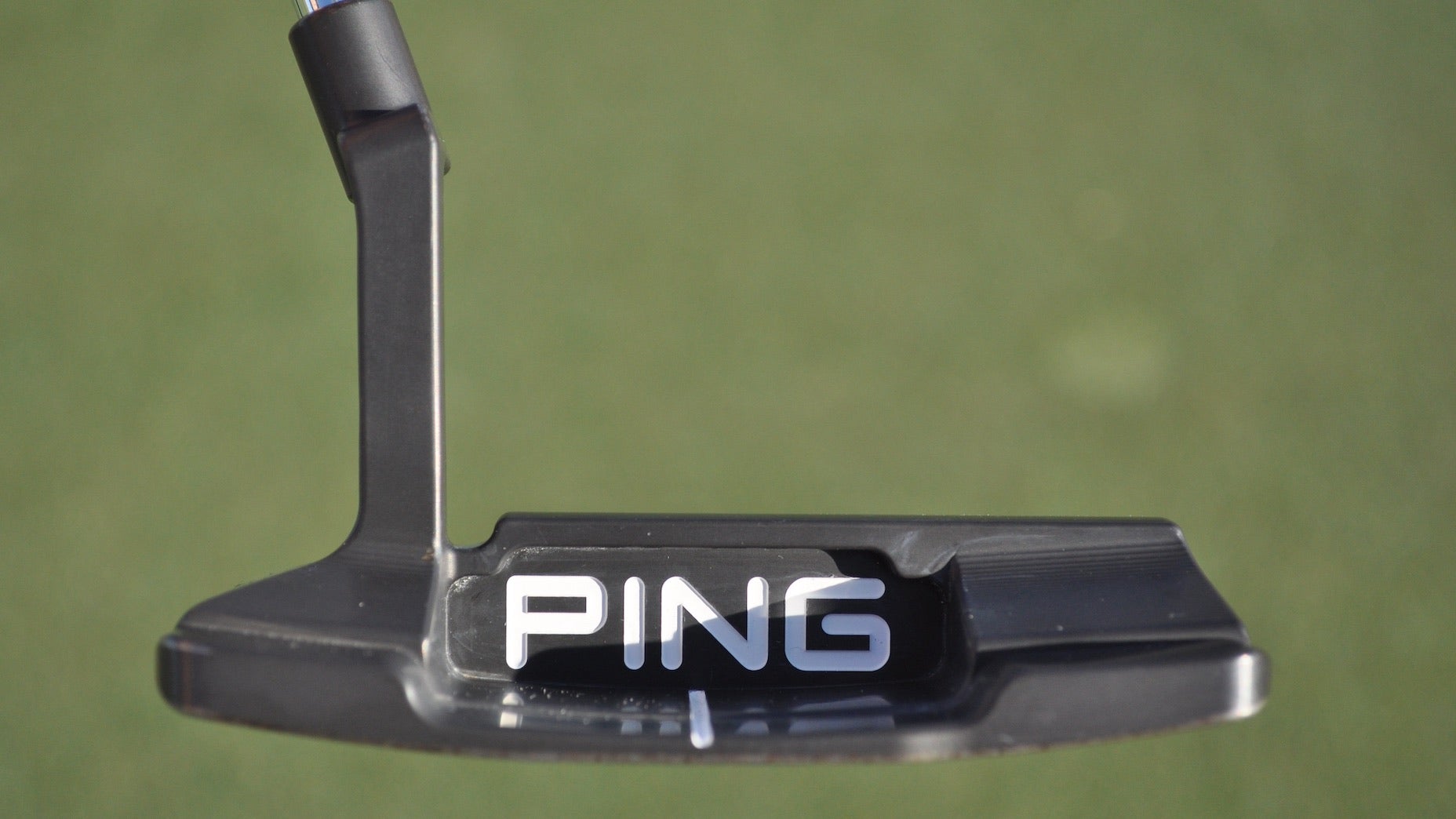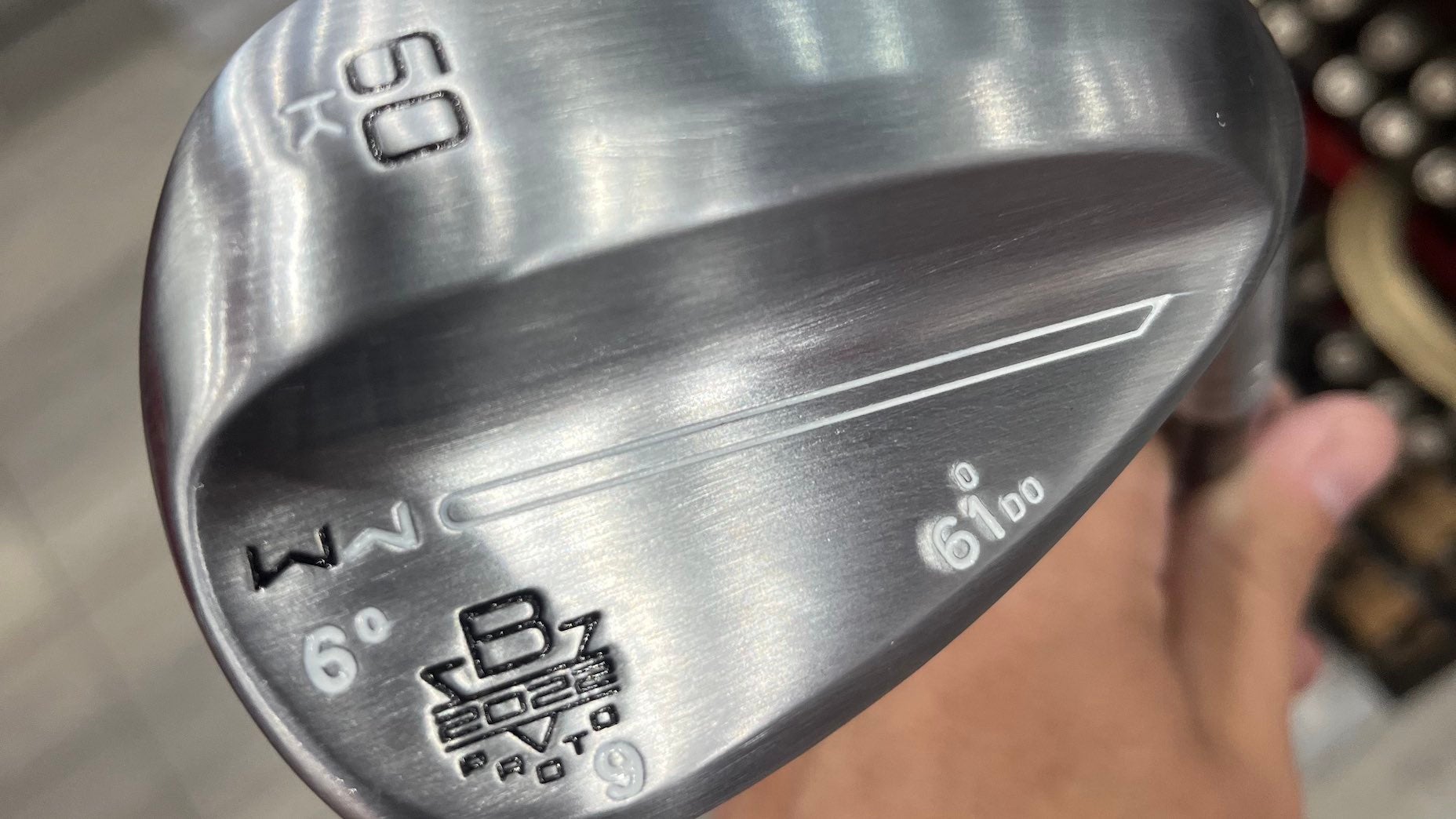Welcome to Wall-to-Wall Equipment, the Monday morning gear wrap-up in which GOLF equipment editor Jonathan Wall takes you through the latest trends, rumors and breaking news.
Light lobber
Shedding weight is one way to gain speed with the driver. But what about the lob wedge? Before you chalk this up as a club experiment gone wrong, let’s point out Xander Schauffele used a lob wedge last week that was lighter than almost anything in the field.
Schauffele’s irons and wedges are a common D3 swing weight, save for a 60-degree Vokey SM9 60-06K lob wedge that happens to be a feathery D0. That’s right: D0. Schauffele is actually the only pro in Vokey’s database who currently uses a D0 swingweight.
So how did Schauffele wind up in an ultralight lobber? According to Vokey Tour rep Aaron Dill, the conversation initially started at the AT&T Byron Nelson where Schauffele spent time working with Patrick Cantlay’s SM8 62-08 lob wedge on the practice green. Cantlay’s lob wedge happens to be D1 swing weight.
“[H]e’d spent a little time chipping with Patrick Cantlay’s lob wedge and said he thought the weighting was really interesting,” Dill said. “Patrick’s pretty light — he’s about D1. Most guys are right around D5. He said, ‘I kind of like the way it felt, and I want to try it. What do you think? Should I just go down to D2 or D1?’ (He was previously at D3.) And I said, ‘Let’s take you a step further and really see if this feels the way you want.'”
Winner’s Bag: Xander Schauffele at the 2022 Travelers ChampionshipBy: Ryan Barath
Dill wound up making Schauffele two Vokey wedges in his usual K and T grinds — Schauffele has two grind options depending on course conditions — with a D0 swingweight to see how they checked out.
Schauffele liked them so much, he wound up taking both home after the practice session.
Reducing the weight in the lob wedge is something most golfers wouldn’t consider — it’s more common to add weight for feel purposes in the wedges — but in Schauffele’s case, it wound up helping him in a number of different ways around the green.
“By going lighter you’re able to create a little more speed, dial up the spin and hit it a little higher around the greens,” Dill said. “He was like, ‘This thing feels so good. I feel like I can throw it through the ball a little faster, create a little more spin, and have a little more height when I want.'”
Coming out on top
Callaway’s Jaws Raw wedge made its official Tour debut at the Travelers Championship, but we already had a feeling it was coming down the pipeline as far back as a month ago when Schauffele debuted a 52-degree at the Byron Nelson.
“I’ve always liked wedges that rust over time,” Schauffele told GOLF.com. “There’s not as much glare and they just feel better to me. With that one, I just found it was better around the greens and had really consistent spin.”
Spotted @XSchauffele carrying a 52-degree @CallawayGolf Jaws Prototype wedge today. Face looks to be raw, but the rest of the head is plated. 👀 pic.twitter.com/1FHQ7cIewy
— Jonathan Wall (@jonathanrwall) May 11, 2022
Schauffele was one of 18 players in the field with a Jaws Raw wedge in the bag. Kevin Kisner, Marc Leishman, Si Woo Kim, and Danny Willett were a few of the other notable names who also chose to employ Callaway’s latest scoring tool that features a raw wedge feel and plated look.
Check out the full rundown on Jaws Raw from last week.
Strong start

The follow-up to Titleist’s wildly popular TSi was always going to have some big shoes to fill. Two years ago, Titleist watched 26 players use TSi right out of the gate on its way to becoming arguably the most popular driver on Tour. Count wins became routine.
With an ATI 425 titanium alloy face acting as the supercharged engine, Titleist never lost momentum in the marketplace.
So how do you keep the momentum going with a new product? If you’re Titleist, you refrain from completely reinventing the wheel. At the Travelers Championship, Titleist released its new TSR drivers (TSR2, TSR3 and TSR4) and saw 18 players adopt one of the three models during the official Tour launch, including Jordan Spieth (10-degree TSR3). (Spieth has been slow to change drivers in recent years.)
Davis Riley, who switched to an 8-degree TSR3, wound up leading the field in SG: Off-the-tee for the week after seeing more consistent ball speeds across the entire face, especially on high toe misses.
“Immediately when I pulled the headcover off, I was like, ‘Dang, this looks really good,'” Riley said. “The overall look, the feel is awesome. It’s really good. The mishits are really good. I’m finding really consistent spin across the face no matter where I’m hitting it, so that you’re maxing out your carry numbers every time. It’s what you really want to look for. It’s not how good your good hits are. It’s, ‘How good are your bad hits?’ And just seeing that consistency across the face is really cool to see.
“I actually saw 1 or 2 mph increase in ball speed, which is really nice. Typically when you have a mishit, you see that number drop dramatically. But I noticed right away, I was like, ‘OK, I hit one of those a little high on the toe.’ And the numbers were almost identical to the center hit.”
J.T. Poston reported seeing a similar 2 mph ball speed increase with a 9-degree TSR3. He wound up finishing runner-up to Schauffele at the Travelers and was one of two players — Chesson Hadley, 10-degree TSR3, was the other — to finish inside the top 5 using a TSR driver.
Titleist has yet to comment on the technology behind the driver but with ATI425 still in the fold, it appears the company is unlocking more speed through a new aerodynamic shape. According to GOLF’s Ryan Barath, who was on site for the Tour launch, there are visible ridges around the weights on the TSR2 and TSR4 that act like “mini diffusers on a Formula1 car to speed up airflow and reintroduce it to the air around the head — in simple terms it helps the head move faster, and a fast club head results in more distance.”
Whatever Titleist is doing seems to be working.
Finau’s lead tape experiment

Lead tape is one of the easiest ways to add weight to a putter head without making permanent alterations. Tiger Woods uses it during the Open Championship to generate more speed on slower greens. Schauffele has caked it on the sole of his putter in the past to achieve a specific feel. Needless to say, it’s a common sight on Tour.
You can add Tony Finau to the list of pros who dabbles in lead tape. Finau isn’t afraid to add it to his Ping clubs, including the putter. In the run-up to the U.S. Open, Finau worked with Ping putter rep Dylan Goodwin to see if there was a way to help improve face awareness during the stroke. Goodwin suggested lead tape — 5 grams worth — as a potential solution. But with the green speeds at The Country Club, Finau refrained from adding it to his putter during the tournament.
At the Travelers, however, Finau had a backup version of his PLD Anser 2D fashioned with several strips of lead tape (5 grams) on the sole. Finau wound up using his gamer, sans lead tape, during the tournament but plans to continue testing the backup version with the lead tape to see if the additional heft can provide a permanent solution.
Want to overhaul your bag for 2022? Find a fitting location near you at GOLF’s affiliate company True Spec Golf. For more on the latest gear news and information, check out our latest Fully Equipped podcast below.











